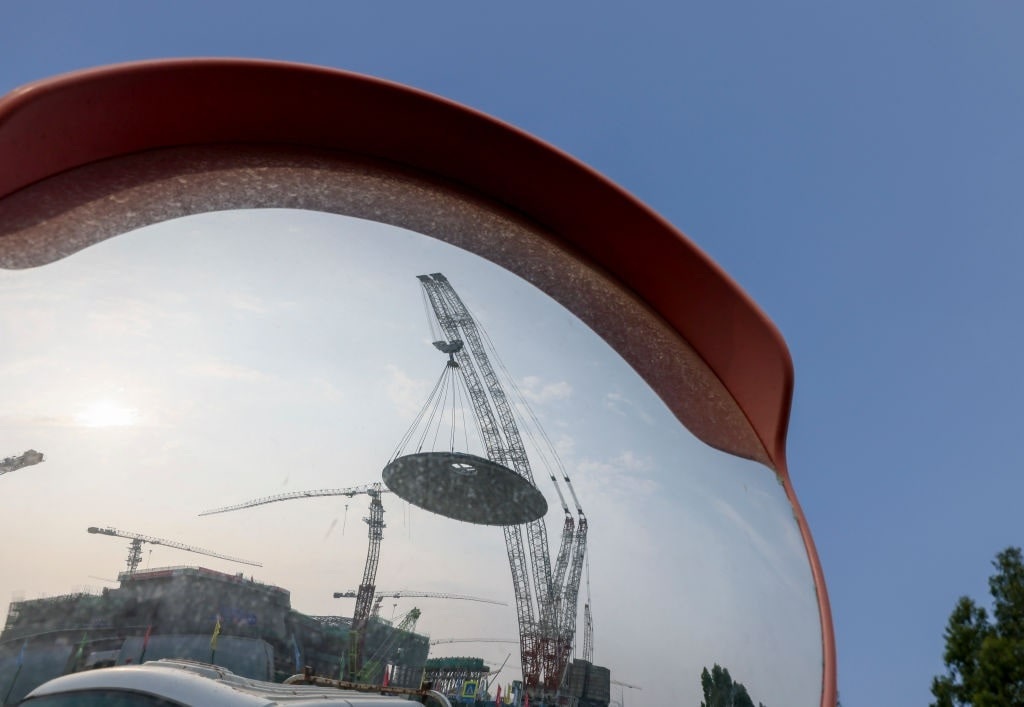
With Trump’s backing, the technology could be the answer to failing grids.
There is no doubt that President Donald Trump is keen to put the United States at the forefront in the deployment of small modular nuclear reactors. Implementing the president’s desires will be the challenge. One of the last presidential actions Trump signed during his first term on Jan. 12, 2021, was the Executive Order on Promoting Small Modular Reactors for National Defense and Space Exploration. Since taking office in 2025, America’s chief executive has quadrupled down with four executive orders designed to deploy advanced nuclear reactor technology for national security, streamline regulatory processes and testing, and fortify a robust nuclear reactor industrial base.
Nuclear Power in a Small Package
The US Air Force began the effort to install a five-megawatt, scalable to 20-megawatt, microreactor at Eielson Air Force Base, Alaska, in 2022. However, the Air Force and Defense Logistics Agency failed to complete a successful procurement process, which stalled the venture. But that project is back on track. “Eielson Air Force Base, located near Fairbanks, was named in June [2025] by the Defense Department as the preferred site for the reactor. Pentagon officials hope to have it built and running by late 2028,” Stars and Stripes reported. It’s not particularly reassuring that the Defense Department is counting on “hope” to make the project a reality.
However, with White House backing, the likelihood of progress in establishing nuclear power as the power of choice for military installations increases significantly. President Trump’s Executive Order 14167, titled Deploying Advanced Nuclear Reactor Technology for National Security, signed in May, stated unambiguously:
“The Secretary of Defense, through the Secretary of the Army, shall establish a program of record for the utilization of nuclear energy for both installation energy and operational energy. The Secretary of Defense, through the Secretary of the Army, shall commence the operation of a nuclear reactor, regulated by the United States Army, at a domestic military base or installation no later than Sept. 30, 2028.”
With the weight of an executive order behind the endeavor, having a working, appropriately sized nuclear reactor that provides a “domestic military base or installation” by 2028 is more than a suggestion.
Often, the terms small modular reactor (SMR) and microreactor are used interchangeably; however, there is a distinct difference centering on power output. An SMR typically produces 50 to 300 megawatts of electricity; a microreactor, like the one envisioned for Eielson AFB, has an output of 1 to 20 megawatts, capable of powering small communities or military installations with 2,000 to 40,000 people. A microreactor with a power output of just five megawatts would be capable of powering a city the size of Middlebury, VT, with a population of almost 10,000.
According to the Department of Energy, three characteristics define a microreactor: (1) it is fabricated in a factory and shipped fully assembled to the installation location; (2) the design is smaller, allowing the reactor to fit in a sea van shipping container or a flatbed tractor-trailer rig; and (3) it is self-adjusting with “simple and responsive design concepts which reduces the need for a large number of specialized technicians. Passive safety systems prevent overheating or reactor meltdown.” Typical construction time will vary from one to three years, with faster fabrication when building more than just one at a time.
International Interest
The enthusiasm for developing SMRs and microreactors has become international, with the United States leading the way. “In recent years, the United States and Romania have gradually expanded their civil nuclear cooperation. In 2021, Romania signed an agreement with NuScale Power to explore small nuclear reactor deployment,” The Daily Signal observed. As momentum increases in the United States for the manufacture and sales of SMRs and microreactors, moving away from fossil fuels to an equally reliable clean energy source that is more locally controlled becomes possible. The appeal of microreactors lies in their minimal maintenance and nearly autonomous operations, combined with their high mobility. As a result, microreactors would be helpful in disaster relief.
With the White House’s zeal for SMRs and microreactors, the United States can anticipate a resurgence in nuclear power for both small- and medium-sized applications. The state of Alaska is on board with making the regulations for atomic power more easily navigated. “These changes give communities more control over how they meet local energy demands and lay the groundwork for developers to utilize dependable and carbon-free nuclear energy to power work in remote locations,” an Alaska state government press release stated. Numerous SMRs and microreactors providing power to a large number of grids enhances reliability and availability. The time for the small nuclear reactor may finally have arrived.
The views expressed are those of the author and not of any other affiliate.
Liberty Nation does not endorse candidates, campaigns, or legislation, and this presentation is no endorsement.

















